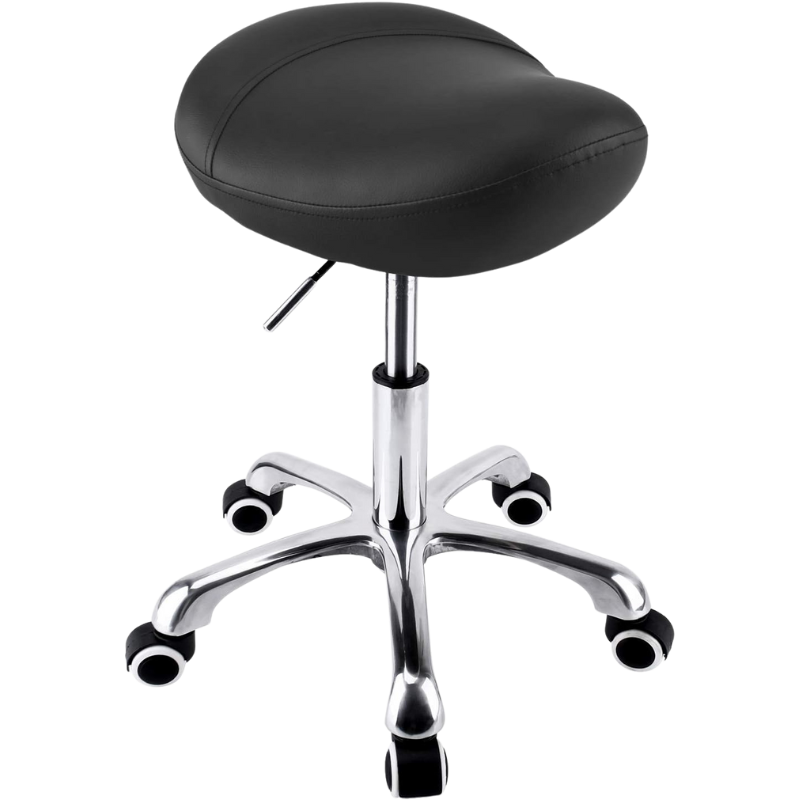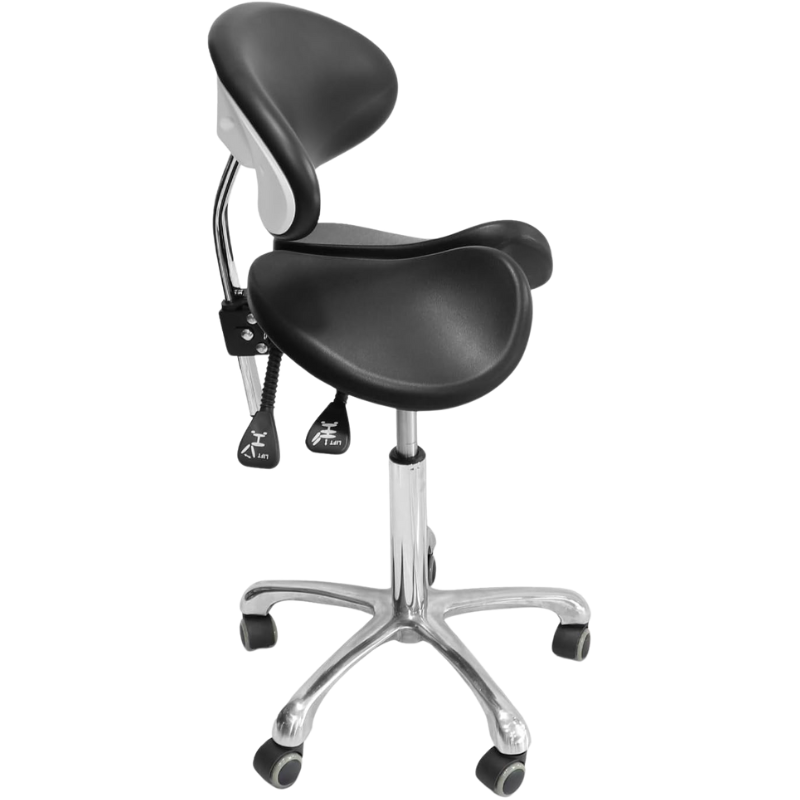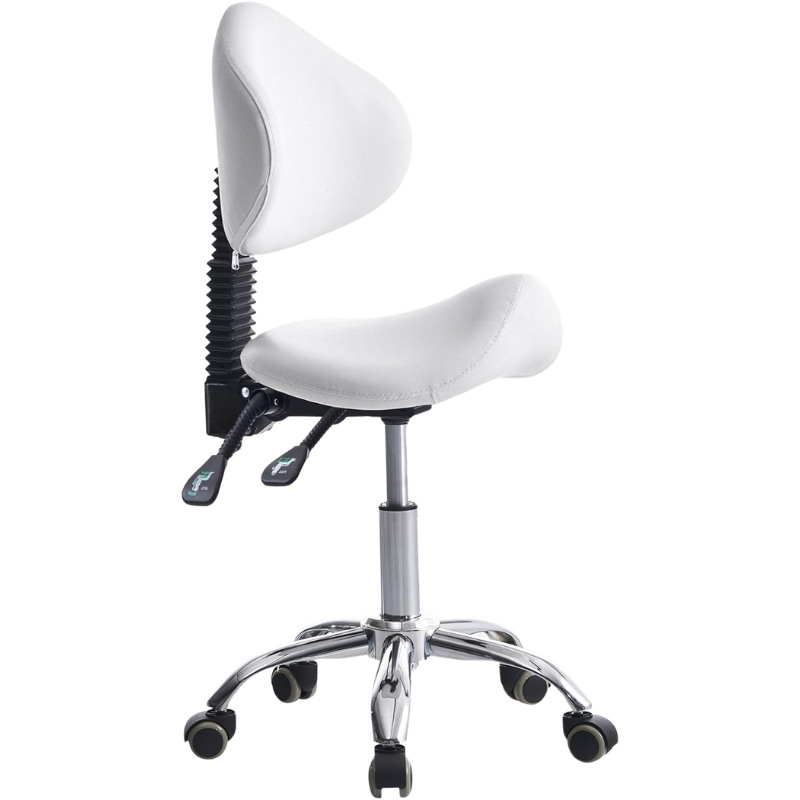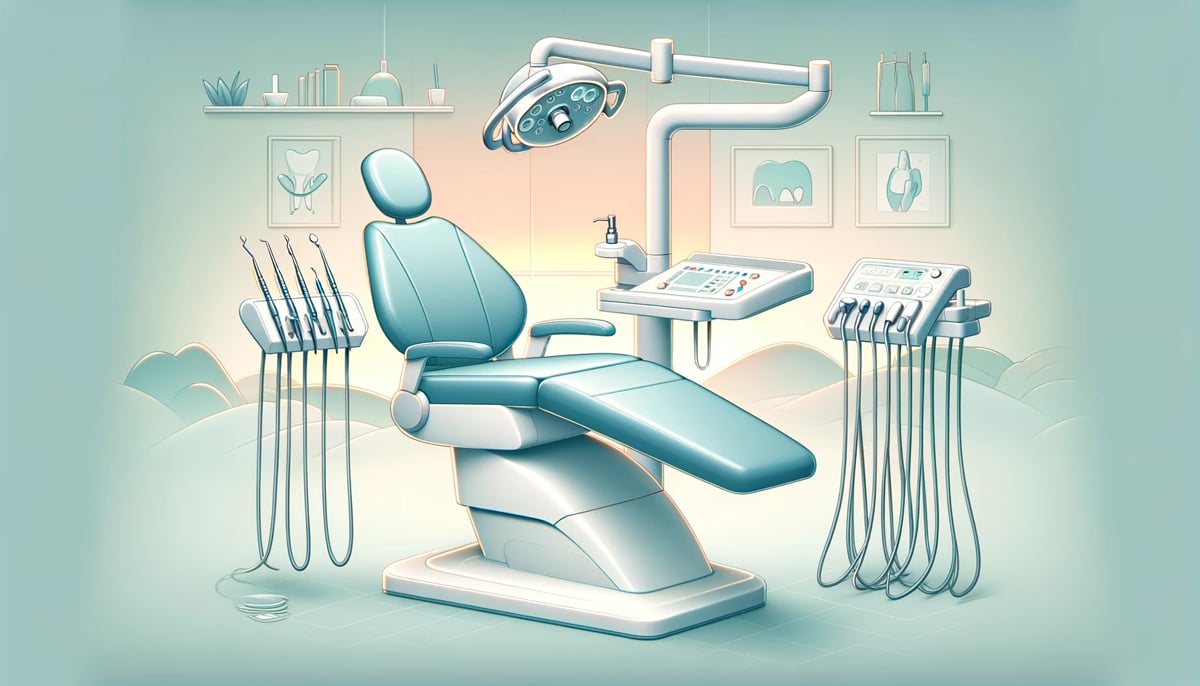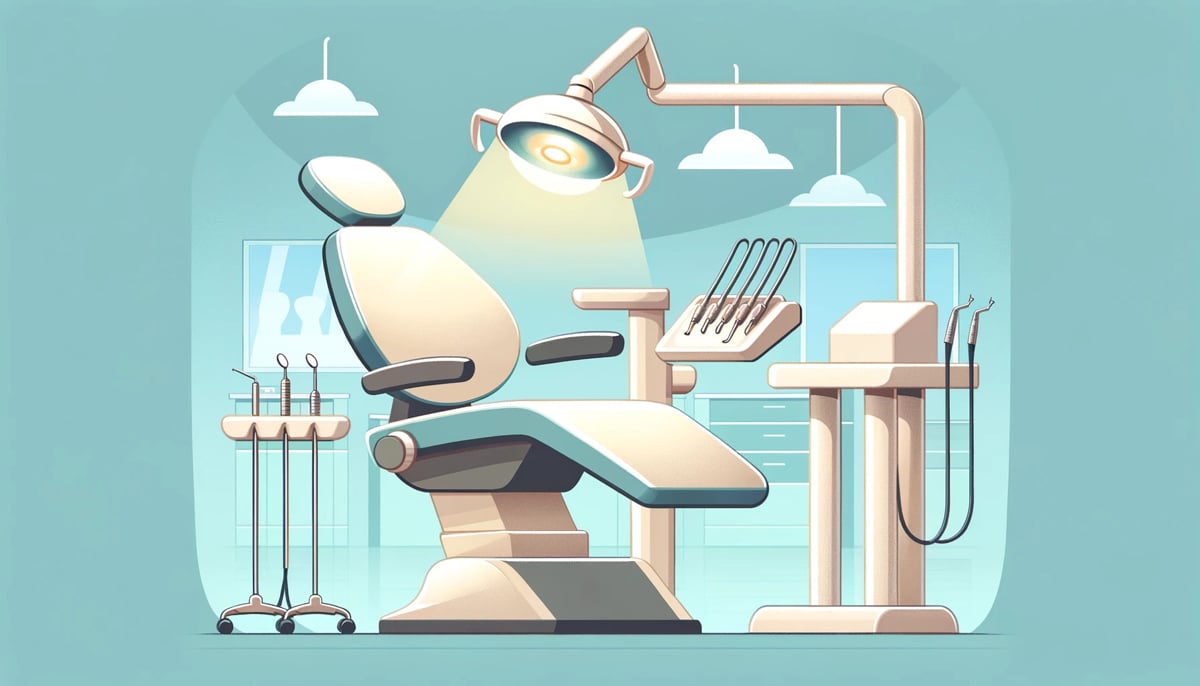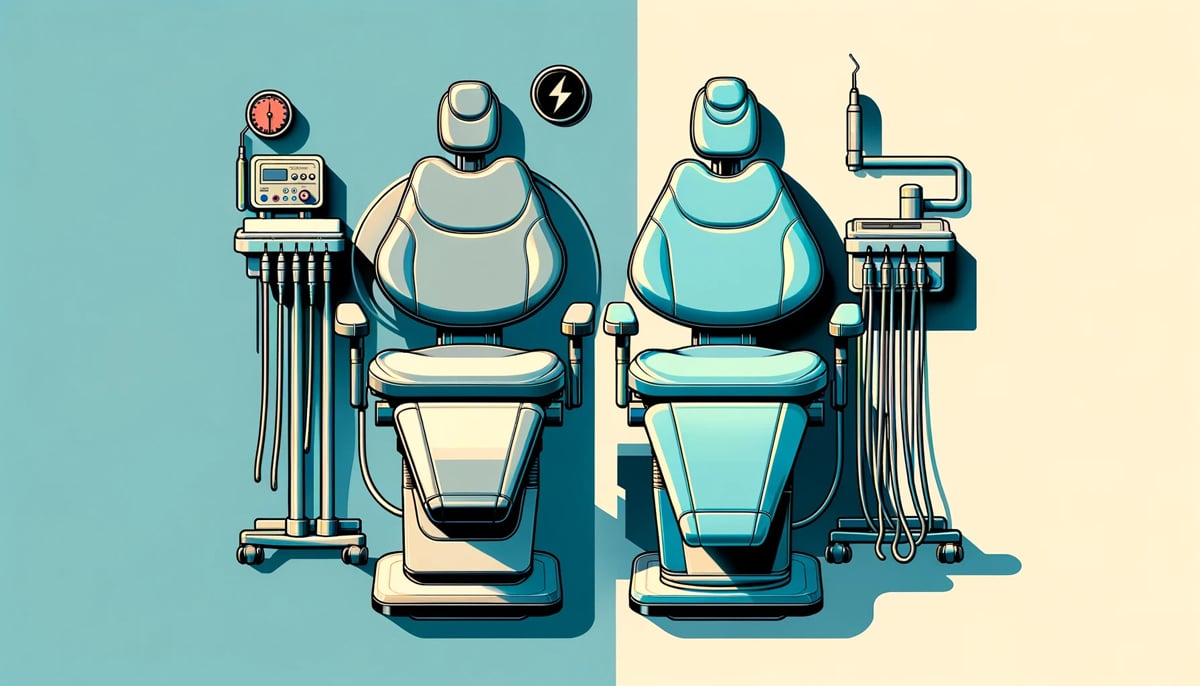Saddle Stool Dental Chair
Premier Source for Dental Seating Solutions
Ergonomic Dental Seating
At Saddle Stool Dental Chair, we provide top-notch dental chairs and seating solutions that combine comfort, ergonomics, and functionality. Our expert team, with extensive experience in dental practices, handpicks and recommends the best options tailored to meet the needs of dental professionals.
Shop now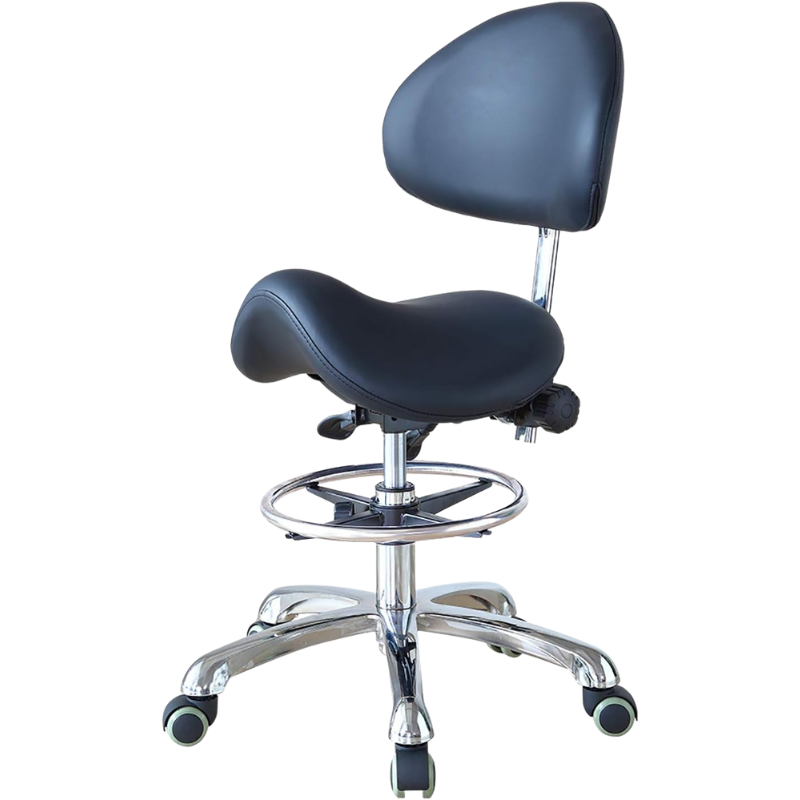
Saddle Stool Dental Chair Categories
Explore Our Wide Range of Saddle Stool Dental Chairs and Seating Solutions
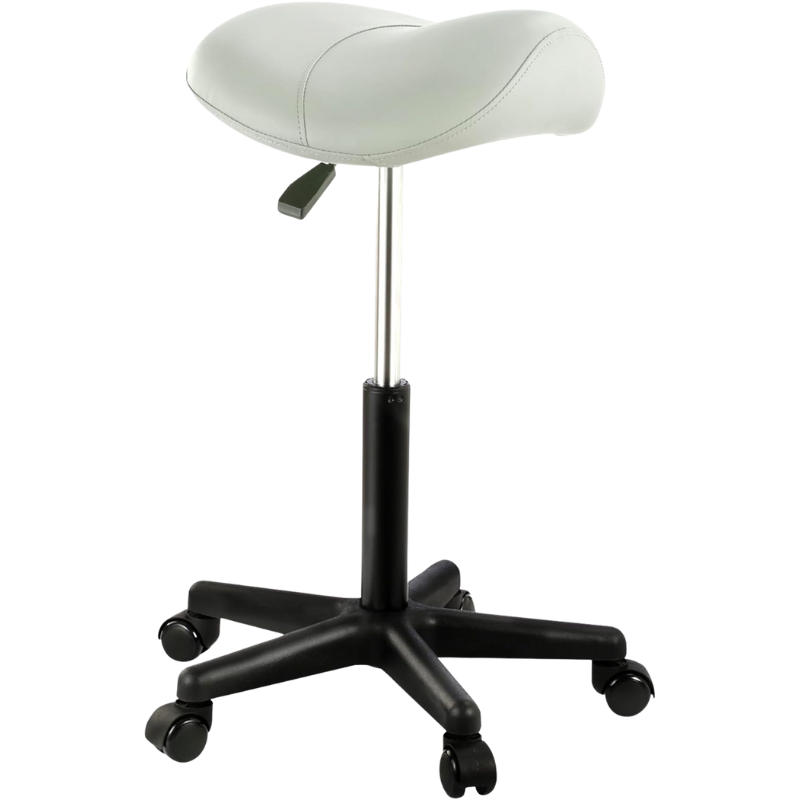
Discover our exclusive selection of dentist chairs, including the renowned Crown Seating line, ergonomic saddle stools, saddle seats, and assistant chairs designed for dental hygienists and dental assistants. Each chair blends style and practicality, offering features like adjustable backrests, height range flexibility, and personalized color options to fit any dental operation.
Saddle Seating: A Revolution in Dental Comfort
Our saddle stools are a testament to ergonomic innovation. These stools are designed for long hours of dental procedures and ensure maximum comfort and support. The ergonomic seat design promotes better posture, reducing the strain on your back during extended dental procedures like root canals.
State-of-the-Art Dental Equipment for Enhanced Patient Care
Our focus is on providing premium saddle stool dental chairs designed to enhance comfort and efficiency in dental practices. These chairs embody ergonomic excellence, offering dental professionals improved posture and reduced strain. Our specialized chairs from reputable brands ensure top-notch quality and reliability, significantly impacting the modern dental workspace.
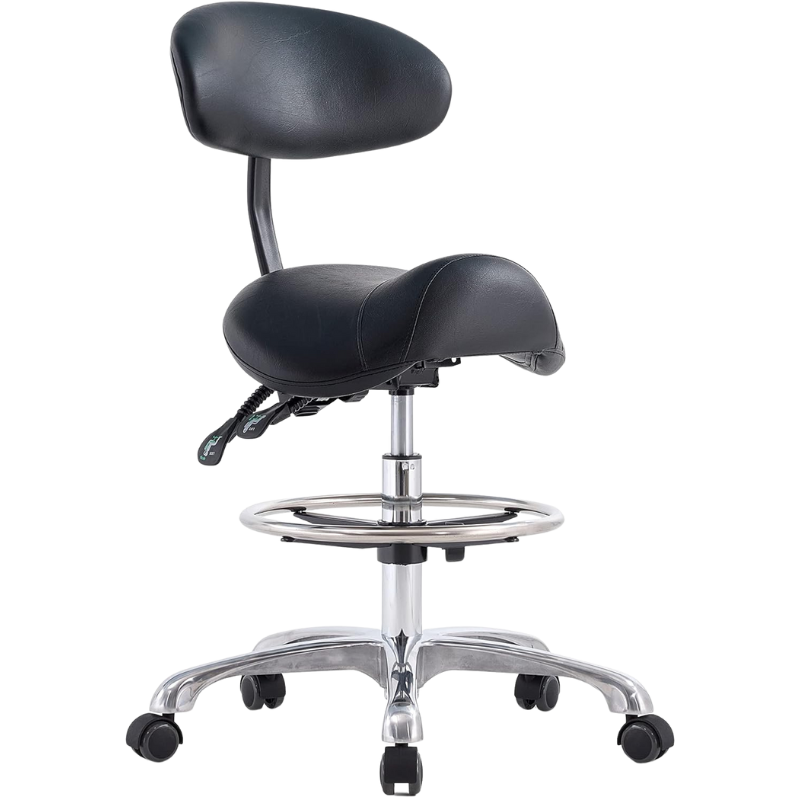
Dental Stools Designed for Professionals
Our range includes dental stools and dental saddle stools tailored for professionals. Made with high-quality materials like PU leather, these stools offer durability and ease of infection control.
Dental Supply: Everything You Need in One Place
Beyond chairs and stools, our inventory extends to comprehensive dental supply kits. We offer a variety of dental seating solutions, including patient chairs and doctors’ stools, to complete your operatory setup.
Efficient and Streamlined Ordering Process
We facilitate a smooth ordering process, connecting you with high-quality dental chairs. Our service ensures a quick and seamless experience where your orders are processed promptly. This approach guarantees a hassle-free experience for acquiring your essential dental equipment.
Your Partner in Dental Excellence
We are committed to enhancing the efficiency and comfort of dental practitioners. Whether you are setting up a new dental practice or upgrading your existing equipment, we are here to provide tailored seating solutions and dental equipment. Choose us for quality, variety, and exceptional service.
Our team
Contact us for more information or to discuss your dental practice needs. Our team is ready to assist you in selecting the perfect dental chairs and equipment for your clinic.
Dentists (and Their Patients) Love Us!
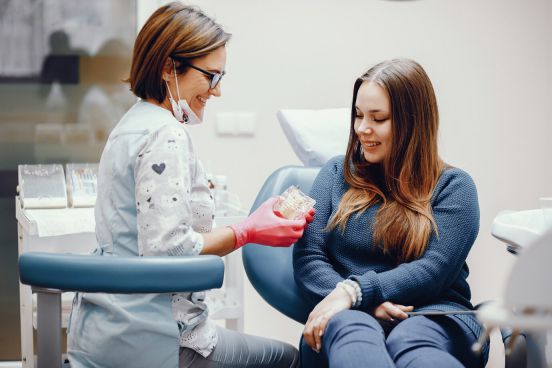
Dr. Alan Grant, Dental Surgeon
“As a dental surgeon, comfort and precision are key. The ergonomic design promoted by Saddle Stool has greatly assisted in my surgical procedures. My patients appreciate the comfort, and I appreciate the support.”
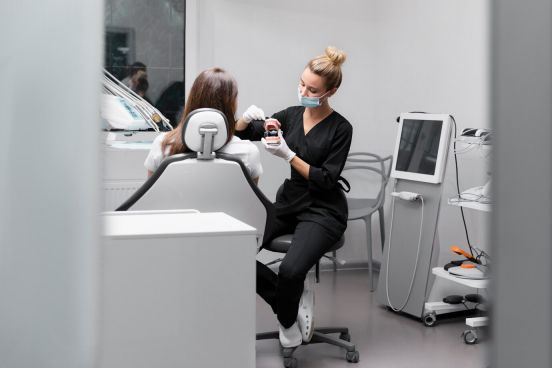
Dr. Lucia Martinez, Pediatric Dentist
“I decided to invest in Saddle Stool chairs for my pediatric practice. The chairs are comfortable for me and reassuring for my young patients. The detailed insights provided on the site were incredibly helpful.”
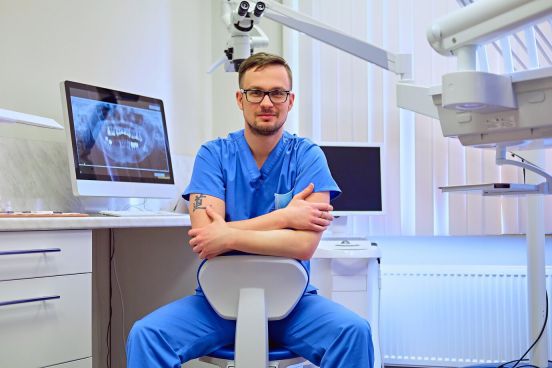
Dr. John Kim, Orthodontist
“I’m thoroughly impressed by the quality and design of these chairs. Following Dr. Susan’s research on ergonomics, I felt confident in my purchase. It has positively impacted my daily work life.”
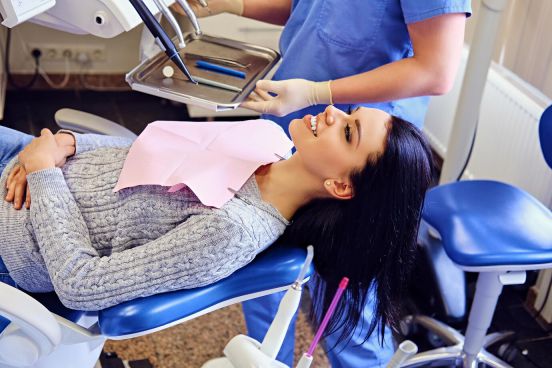
Dr. Isabella Rodriguez, Cosmetic Dentist
“I applaud the team at Saddle Stool Dental Chair for their innovative approach. The chairs have improved my posture and overall comfort at work. My patients have also commented on the enhanced comfort during treatments.”
Latest From Our Blog
FAQs
-
Why Do Dentists Use Saddle Chairs?
Dentists use saddle chairs primarily for their ergonomic benefits. These chairs, designed like a horse’s saddle, encourage a natural, upright posture, reducing strain on the spine during long procedures. The design of saddle chairs, such as those in our stool series, is conducive to improved leg circulation and better balance, making them ideal for the demanding environment of a dental operatory.
-
What Is the Best Stool for a Dental Hygienist?
The best stool for a dental hygienist offers ergonomic support, adjustability, and mobility. Saddle stools, known for their ergonomic design, are highly recommended. They allow for easy movement around the patient while maintaining a healthy posture, which is essential in the precise work of a dental hygienist.
-
Can You Sit on a Saddle Stool All Day?
You can sit on a saddle stool all day, as they are designed for prolonged use. These stools encourage a natural seating position, promoting better posture and reducing fatigue. However, taking regular breaks and adjusting your position throughout the day is essential to avoid discomfort.
-
What Is the Difference Between Saddle and Flat Stools?
The main difference lies in their design. With its unique contoured shape, a saddle stool promotes an ergonomic seating posture, imitating how one would sit on a horse. In contrast, a flat stool doesn’t offer the same level of posture support and may lead to quicker fatigue and discomfort.
-
What Are the Downsides of Saddle Chairs?
While saddle chairs offer many benefits, they can take time to get used to. Some users may experience thigh discomfort or require time to adjust to the new posture. Additionally, the unique shape may not suit everyone’s body type.
-
Why Is a Saddle Stool Better?
A saddle stool is better because it promotes a more natural spine alignment and reduces the risk of back pain. Its design encourages the pelvis to tilt forward, maintaining the natural curvature of the lower back, leading to improved posture and comfort.
-
Are Saddle Stools Better Than Chairs?
Saddle stools are often considered better than traditional chairs for tasks that require mobility and ergonomic support. They are particularly beneficial in dental operatories where precision and comfort are paramount.
-
Can a Saddle Chair Cause Back Pain?
If not used correctly, a saddle chair can cause back pain. It’s important to ensure that the stool is adjusted to the right height and maintain a balanced posture. Gradual introduction to the saddle chair is recommended to allow your body to adapt.
-
Can Saddle Chairs Cause Hip Pain?
Saddle chairs can cause hip pain if not properly adjusted or if used excessively without breaks. It’s crucial to find a saddle chair that fits your body and to alternate sitting positions throughout the day.
-
How Do I Choose a Saddle Stool?
Choose a saddle stool based on adjustability, seat width, and comfort. Consider a stool that allows for easy height adjustment and has a seat that fits your body size. Also, look for stools with quality padding and durable materials.
-
Is a Saddle Stool Better for Your Back?
A saddle stool can be better for your back as it promotes an upright posture and reduces lower back strain. The ergonomic design supports the spine’s natural curve, making it a good choice for those with back issues.
-
Are Saddle Stool Dental Chairs comfortable?
A saddle stool dental chair is generally comfortable, especially for movement and flexibility tasks. They provide a balanced seating position, which can reduce fatigue and increase comfort during long working hours.
-
What Makes the Best Saddle Chair for a Dental Hygienist?
The best saddle chair for a dental hygienist combines ergonomic support, adjustability, and ease of movement. Look for chairs with features like adjustable backrests and height flexibility tailored for the precise work of dental hygienists.
-
Can I Find a High-quality Dental Saddle Chair with Back Support for under $400?
While the price range varies, finding a quality dental saddle chair with back support under $400 is possible. Consider chairs that balance comfort, durability, and ergonomic design within this budget.
-
What Are the Benefits of a Saddle Dental Assistant Chair Compared to Traditional Chairs?
A dental assistant saddle chair promotes better posture and reduces fatigue, especially during long procedures. Its ergonomic design supports natural spine alignment, making it superior to traditional chairs for dental assistants.
-
How Does a Saddle Dental Chair with an Armrest Enhance a Dentist’s Comfort and Efficiency?
A saddle dental chair with an armrest enhances comfort and efficiency by supporting arms and reducing shoulder and neck strain. This feature, combined with the ergonomic design of the best dental saddle chair, ensures optimal posture and ease of movement, essential for long procedures. The dental saddle seat design further aids in maintaining a healthy posture while offering comfort during extended sitting periods.
Explore the key features for optimal comfort and efficiency in dental chairs: height adjustability, ergonomic support, durable materials, and user-friendly design. This concise guide helps dental professionals make informed choices for improved workplace ergonomics and patient care.
Ergonomics and Comfort
- Height Adjustability: Height adjustability is paramount when selecting a saddle stool dental chair with a footrest. This feature ensures that the stool height can be easily altered to suit different user heights, promoting an ergonomic working posture. It’s essential for accommodating the varied physiques of dental professionals and their comfort throughout long procedures.
- Lumbar Support: Lumbar support is critical in any dental chair, especially for those who spend extended periods seated. A chair with sufficient lumbar support can prevent back pain and fatigue, contributing to a healthier work environment and enhanced productivity.
- Seat Tilt Adjustment: Another crucial aspect of ergonomics in dental chairs is the ability to adjust the seat tilt. This feature allows dental professionals to find the most comfortable and supportive angle for their bodies, reducing the strain on their lower backs and legs.
- Materials: The materials used in the seat and backrest significantly affect the chair’s comfort level. Breathability and skin-friendliness are key factors to consider, as they impact the user’s comfort during long sessions. Materials that promote air circulation and prevent sweating are highly desirable.
- Seat Cushion Design: A well-designed seat cushion plays a vital role in comfort. It should be structured to reduce pressure points and promote ease during prolonged sitting. The cushioning should balance firm support with soft comfort to prevent fatigue.
- Posture Maintenance: The chair’s overall design should help maintain proper posture. An ergonomically designed chair encourages a natural, healthy sitting position, which is crucial for dental professionals working long hours.
- Armrests: It is important to investigate the availability and adjustability of armrests. Armrests adjusted or removed according to the user’s preference can enhance comfort and accessibility during dental procedures.
- Body Type and Size Suitability: A dental chair must cater to various body types and sizes. This inclusivity ensures that all users can work comfortably and efficiently, regardless of their physique.
- Swivel Function: A smooth swivel function is essential for maneuverability and ease of access in a dental setting. It allows the professional to turn effortlessly without straining, which is crucial during detailed dental procedures.
- Foot Support: A foot ring or support adds another layer of comfort. This feature allows for better posture and reduces leg fatigue, which is particularly beneficial during lengthy treatments.
- Split Saddle Stool: The split design in saddle stool chairs enhances pelvic comfort and reduces pressure, promoting better posture and movement.
Functionality and Features
- Lift Systems: The chair’s lift system, whether hydraulic or pneumatic, plays a significant role in its functionality. An efficient and reliable lift system ensures smooth height adjustments, contributing to the chair’s overall ergonomics and usability.
- Dental Tool Accessibility: For a dental chair, built-in features for easy accessibility of dental tools are vital. These features enhance workflow efficiency, allowing for a smoother and more organized dental procedure.
- Stability Features: A dental chair’s stability is non-negotiable. Chairs equipped with lockable casters or wheels provide the necessary stability, ensuring safety and precision during dental treatments.
- Independent Backrest Adjustment: The ability to adjust the backrest independently of the seat allows for a more personalized and comfortable seating position, which is essential during long dental sessions.
- Equipment Compatibility: Evaluating the chair’s compatibility with other dental equipment is crucial for a seamless dental practice. This compatibility ensures that the chair can be integrated effortlessly into the dental workspace.
- Seat Options: Offering various seat sizes or shapes allows dental professionals to choose a chair that best fits their body type and personal preference, enhancing comfort and efficiency.
- Foot-Controlled Height Adjustment: A foot-controlled height adjustment feature adds convenience and hygiene, allowing the dentist to adjust the chair’s height without using their hands.
- Additional Accessories: Information on additional accessories available for the chair can be a deciding factor. These accessories might include headrests, protective covers, or customizable armrests, adding to the chair’s functionality and comfort.
- Ease of Movement: The chair’s design should facilitate easy movement and reach within a dental setting. This aspect is crucial for maintaining an efficient workflow and ensuring patient comfort.
- Accessibility of Adjustments: The adjustment levers or buttons should be easily accessible and simple. This user-friendly design is essential for quick and effortless customization of the chair’s position during dental procedures.
Durability and Quality
- Construction Materials: The choice of materials used in constructing a saddle stool dental chair directly impacts its durability. High-quality materials ensure the chair can withstand the rigors of daily use in a dental clinic. Stainless steel, aluminum, and high-grade plastics are commonly preferred for their strength and longevity.
- Durability for Daily Use: Dental chairs are used extensively, so assessing how well they hold up under constant use is crucial. Durability in such an environment means resisting wear from movement, weight, and frequent cleaning.
- Cleanliness and Disinfection: Given the nature of dental work, the chair must be easy to clean and disinfect. Materials that are resistant to stains and can withstand regular cleaning with disinfectants are essential for maintaining hygiene in the dental office.
- Wear and Tear: Understanding how the chair handles wear and tear over time is vital. A well-built chair should maintain its functionality and appearance even after years of use. This includes resistance to scratches, dents, and fading.
- Long-Term Durability Issues: Identifying any known issues with long-term durability through customer feedback and product reviews is important. This helps in understanding potential problems that might arise after prolonged use.
- Weight Capacity: The weight capacity of the chair is a critical consideration. A good saddle stool dental chair should be able to comfortably and safely support a wide range of weights, catering to different body types of patients and practitioners.
- Quality Testing: Insight into how the manufacturer tests the chair’s quality can provide confidence in the product. Manufacturers who invest in rigorous testing are more likely to produce reliable and durable chairs.
- Availability of Replacement Parts: Knowing the availability of replacement parts is essential for long-term use. Easy access to parts like cushions, armrests, or wheels ensures the chair can be maintained and used for many years.
- Quality Certifications: Certifications for quality standards, such as ISO (International Organization for Standardization), provide an added layer of trust and assurance in the chair’s build quality.
- Eco-Friendliness: It is increasingly important to consider the chair’s eco-friendly construction. Chairs made with recyclable materials and sustainable practices are preferable for environmentally conscious dental practices.
Warranty and Support
- Warranty Types: Understanding the types of warranties offered by the manufacturer, such as limited, full, or parts-only warranties, is essential. This information helps gauge the manufacturer’s confidence in their product and what protections are in place for the buyer.
- Extended Warranty Costs: Information on the costs of extended warranty coverage can be a deciding factor for many. Extended warranties can offer peace of mind, but weighing their cost against the benefits is important.
- Warranty Process: Explaining the warranty process for repairs or replacements helps customers understand how issues will be handled post-purchase. Quick and hassle-free warranty claims are highly valued in a clinical setting.
- Customer Support: The availability and quality of customer support for technical issues or inquiries are critical. Efficient and accessible customer service enhances the overall user experience and can be a significant factor in the buying decision.
- Warranty Limitations: Awareness of any limitations or exclusions in the warranty helps set realistic expectations. Knowing what is and isn’t covered can avoid surprises in the future.
- Manufacturer Reliability: Insights into the manufacturer’s business tenure and reputation can indicate reliability. A long-standing history in the field often suggests a commitment to quality and customer satisfaction.
- Customer Reviews: Access to customer reviews or testimonials about the chair and support services can offer real-world insights. These reviews can highlight strengths and weaknesses not immediately apparent in product specifications.
- Transferable Warranty: Information on whether the warranty is transferable is particularly important in the resale scenario. A transferable warranty can add value to the chair should the practice decide to sell it.
- On-Site Service: The availability of on-site service or support is a major convenience. This service can minimize downtime in the event of a malfunction or the need for repairs.
- Recalls and Issues: Awareness of any known recalls or issues with the model can prevent future problems and guide more informed purchasing decisions.
Cost and Value
- Total Cost: Understanding the cost of owning a saddle stool dental chair with a footrest is crucial for budget planning. This cost includes the base price of the chair plus any additional features or accessories that may be necessary. It’s important to consider the initial purchase price and the long-term investment.
- Financing Options: The availability of payment plans or financing options can make a significant difference, especially for small or new dental practices. Options like leasing or monthly payments can provide flexibility and make a high-quality chair more accessible.
- Market Comparison: Comparing the cost of the chair to similar models in the market helps understand its value proposition. This comparison should consider the price, features, quality, and durability. A chair might be more expensive but offers better longevity or ergonomics.
- Bulk Purchase Discounts: Details on discounts for bulk purchases are relevant for larger practices or institutions. Buying multiple chairs can often lead to significant savings, which can be a deciding factor for such buyers.
- Competitive Pricing: It is key to analyze how competitively the chair is priced in terms of its features and quality. Finding a balance between cost, functionality, and durability often yields the best value.
- Hidden Costs: It is important to gain insight into hidden costs, such as shipping, installation, or necessary add-ons, for accurate budgeting. These costs can add up and should be considered when calculating the overall investment.
- Value for Money: Evaluating the chair’s value for money involves considering its lifespan, maintenance costs, and benefits regarding comfort and productivity. A chair that initially seems expensive might be more cost-effective in the long run due to its durability and ergonomic benefits.
- Trial and Return Policy: Information on trial periods or return policies can offer peace of mind. Testing the chair in a real-world setting before making a final commitment can be a significant advantage.
- Maintenance and Part Replacements: Understanding the frequency and cost of maintenance or part replacements is vital for long-term planning. A chair requiring minimal maintenance or readily available and affordable parts can reduce overall operating costs.
- Trade-In Options: The availability of trade-in options for older models can be an attractive feature. This allows for an upgrade to newer models without the full cost, making it easier to stay up-to-date with the latest ergonomics and features.
Purchasing a saddle stool dental chair with a footrest is a significant investment that requires careful consideration of various factors. From ergonomic design and comfort to durability, quality, warranty, and cost, each aspect plays a crucial role in ensuring that the chair meets the specific needs of a dental practice. By carefully evaluating these factors, dental professionals can make an informed decision that balances cost with functionality, comfort, and long-term value. Remember, the right dental chair is not just a piece of equipment; it’s an integral part of providing quality dental care and maintaining the health and productivity of the dental team.

